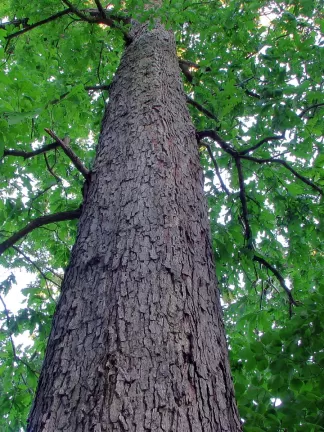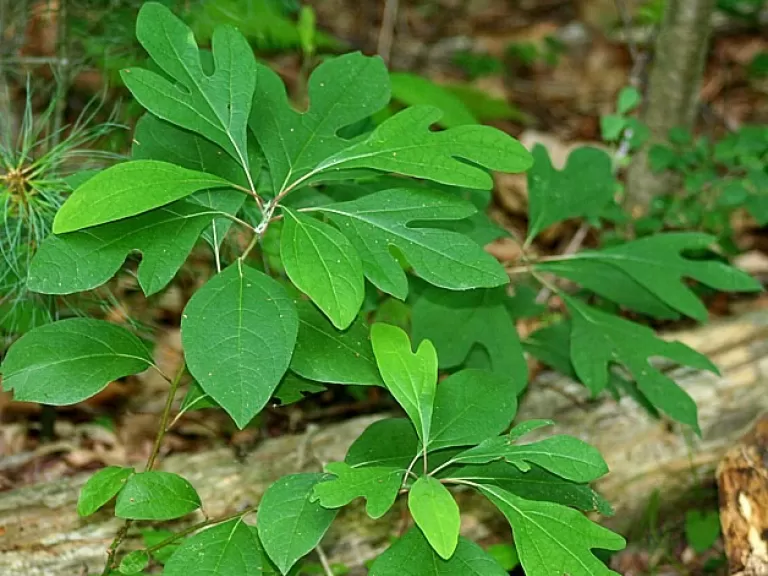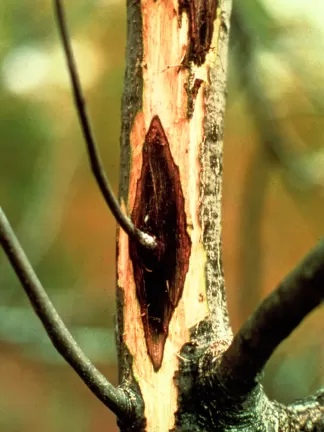White Oak Stand
The area you are approaching is a stand of white oak. Two other interesting tree species found in the upland forest on Wolbach Farm are sassafras and butternut.
The area you are approaching is a stand of white oak. Two other interesting tree species found in the upland forest on Wolbach Farm are sassafras and butternut.

White oak (Quercus alba) is one of the longest-living broadleaf trees on the east coast and can live up to 600 years White oaks were once found in abundance in venerable, old growth stands that were compared to the grandness of California Redwoods. Unfortunately, the majority of these behemoth trees were felled for lumber during western expansion after the Civil War.
Oaks provide significant food value in upland forests, as numerous animals eat acorns. Of all the oaks, white oak supports the most species of animals. It is also a valuable source of lumber due to the strength and resiliency of its wood, but it is not grown as frequently as other species because of its slow growth.
Historically, white oak was favored by Native Americans and early settlers because the acorns could be used to make bread, cakes, and porridge. It is still commonly used as a home planting because of its broad and beautiful growth pattern and its strong tap root system that makes it a reliable tree to plant near a house.
Photo: White oak (Quercus alba).

Sassafras is a versatile plant used in a wide variety of applications. Native Americans used it to help cure many different types of conditions and symptoms by brewing it into decoctions, infusing the bark, and creating poultices. Leaves are also used as a spice and ground with roots to create filé, a common Cajun spice used in gumbo. All parts of sassafras taste spicy.
Photo: Sassafrass, photographed by Craig Smith.

Butternut (Juglans cinerea) is found in the northeastern U.S. and Canada, yet it is becoming rare due to butternut canker (Sirococcus clavigignenti-juglandacearum), a plant disease that kills entire stands of this tree. It is deciduous, and its commonly eaten nut gives it the name butternut. It is also called white walnut because it is in the walnut family.
Photo: Butternut canker on Juglans Cinera, photographed by Mike Ostry, US Forest Service.
Back to Wolbach Farm Interpretive Trail main page.